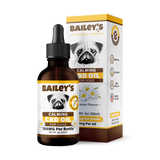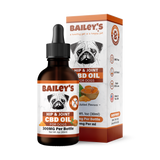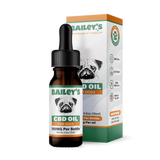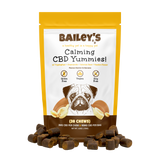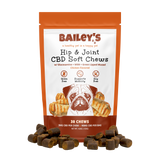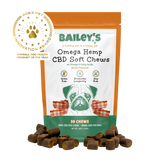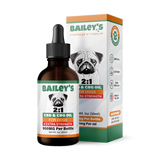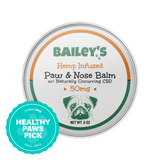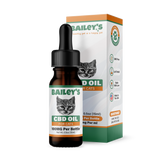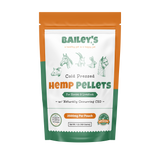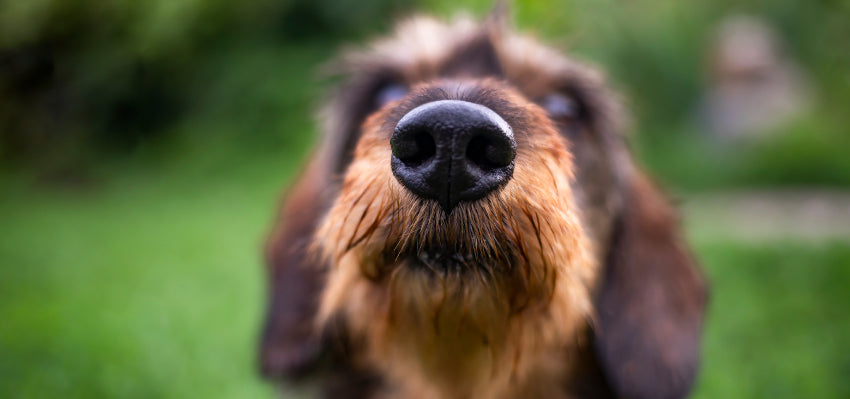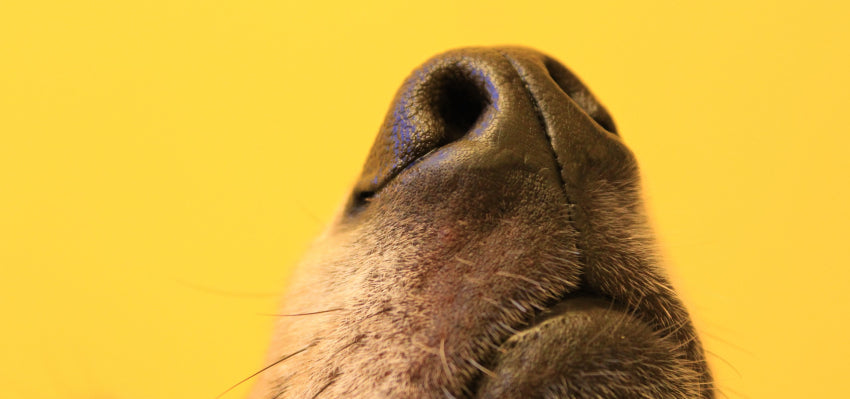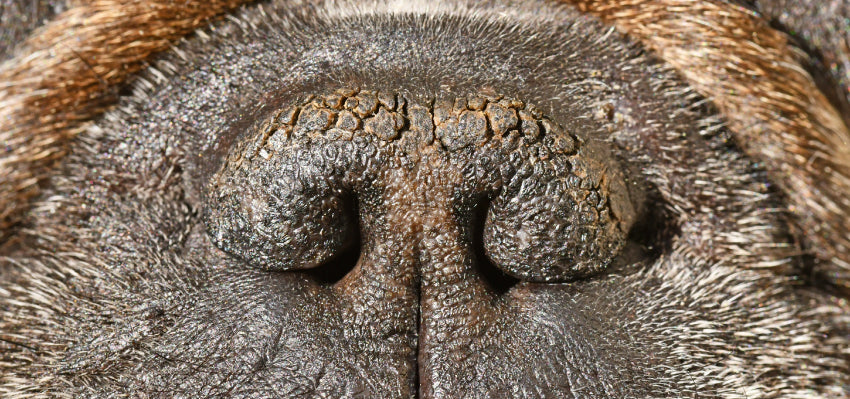Why Is My Dogs Nose Dry and Cracked?
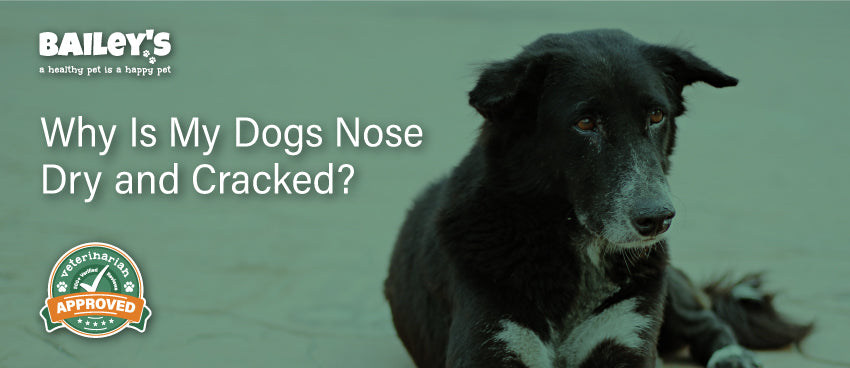
Pet parents are in tune with their four-legged pals and they can tell when even the smallest thing is amiss, right down to the texture of their nose!
Have you noticed that your pup's snout seems to be drier than usual? It might even appear cracked and tender. Seeing this can be concerning, especially if you aren't sure what's causing the change.
As you think back on their diet, exercise, and daily habits, you might wonder, "Why is my dog's nose dry and cracked?" There are a few reasons why this might be happening. In today's post, we'll explore the most common ones and possible treatments to try.
Table of Contents
- 1. Understanding Your Pup's Nose
- 2. Normal Reasons to Consider
- 2.1 Dehydration
- 2.2 Napping or Sleeping
- 2.3 Dog Breeds
- 2.4 Age
- 2.5 Exposure to Heat
- 3. When to Contact a Veterinarian
- 4. Serious Conditions to Check
- 4.1 Severe Allergies
- 4.2 Autoimmune Disease
- 4.3 Canine Hyperkeratosis
- 5. How Can I Treat My Dog's Dry Nose?
- 5.1 CBD Paw and Nose Balm
- 5.2 Coconut Oil
- 5.3 Moist Towel
- 6. Why Is My Dog's Nose Dry and Cracked? Offer Relief Today
1. Understanding Your Pup's Nose
If you speak to most dog owners, they'll tell you that a healthy pup should have a cold, wet nose. Why is this the case? Put simply, their noses work better when they're moist.
As your pooch explores the world around him, odor particles in the air stick better to a damp surface. When these particles land on his nose, they help him tap into his highly developed sense of smell, so he can better interpret the sights and sounds he discovers.
They also help him utilize the special Jacobson's organ located within his nasal cavity, which allows him to identify undetectable odors, such as pheromones.
Dog's noses are pretty incredible! Did you know they contain around 300 million olfactory receptors, whereas humans only have about six million? They have a very sharp sense of smell!
In addition to helping them search out their surroundings, a wet nose also keeps your pup nice and cool, so their body temperature doesn't get too high on hot days.
What makes his nose wet in the first place?
Inside your pet's nose, there are special glands that produce mucus. These glands not only keep his nasal passageways clear and moist, but the fluid they release also helps regulate his internal temperature.
In addition to this natural moisture, dogs add even more dampness by regularly licking their noses to remove dirt, dust, and pollen and keep them nice and clean!
While all of this might be true, it doesn't necessarily mean something is immediately wrong if you notice that your pup's nose is dry. There could be many different reasons why it looks or feels different, and not all of them are alarming. Even a sick pup can have a wet nose, so it's not always a sign of illness.
2. Normal Reasons to Consider
Are you asking, "What does it mean if my dog's nose is dry?" First, let's talk about some of the normal reasons why your pup's nose might be different than usual.
If there are no other symptoms present and these activities align with your pup's behavior, give them time to re-adjust. Then, check to see if their nose goes back to its original state.
2.1 Dehydration
Did you just get back from taking your four-legged pal to the dog park? Or, has he been running around in the yard all afternoon? If your pup has engaged in mild to strenuous activity, a dry nose could be an early sign of dehydration.
Bring your pet to a cool place or into a temperature-controlled environment and make sure he has access to plenty of water. Before long, his nose should be moist again.
If you suspect dehydration is why your dog's nose is dry, take a look at his gums. Soft, moist gums are a sign that your pup is well-hydrated. If they're dry or tacky, it could indicate dehydration.
Of course, if he shows symptoms of more severe dehydration or overheating, contact your vet immediately. Lethargy, vomiting, excessive panting, and sunken eyes can be signs that your pup is seriously dehydrated and emergency support is necessary.
2.2 Napping or Sleeping
When your pup first emerges from dreamland, his nose might be a little drier and warmer than usual. This is because dogs don't usually lick their noses when they're napping or sleeping. If he isn't showing any other physical or behavioral symptoms, give him a few minutes to wake up and check it again.
2.3 Dog Breeds
Certain dog breeds are simply more prone to developing a dry nose than others. This includes brachycephalic, or "short-nosed" breeds such as:
- Pugs
- Boxers
- Bulldogs
- Frenchies
These dogs tend to have flatter-shaped faces, which makes it more difficult for them to reach and lick their noses on a regular basis. In addition to short-nosed breeds, other dogs that may have drier noses include ones that are more prone to blocked tear ducts than others, such as Lhasa Apsos. When their tear ducts dry out, their nasal glands can follow suit, which results in a dry nose.
2.4 Age
For some dogs, dry noses simply happen as a result of the aging process. Similar to how our human skin tends to get drier and more wrinkled as we get older, the same can happen to your pup. Your veterinarian can confirm if this sign is age-related for your pet.
2.5 Exposure to Heat
Have you ever noticed how your skin feels dry and tight after you've spent a day in the sun? The same changes can happen after exposure to windy or cold conditions, too. Your pup's nose can get the same way!
Think about the type of weather he's been around that day. Especially in the heat, his nose can get chapped or even a little sunburned, which can make it drier to the touch. In addition to sunlight, other sources that can trigger the same reaction include fires or heat vents.
Breeds with thin coats or pink, pale noses and eyelids are especially vulnerable to sun-related damage. However, sunburns can also occur in thick-coated breeds. Be sure to use a pet-safe sunscreen to protect your pup, especially during the summer months.
3. When to Contact a Veterinarian
As you can see, a dog's dry nose isn't always cause for concern. However, it can be a sign of a more serious illness. For example, dry noses can indicate a fever or dry eye in dogs.
If you notice any other issues that seem to be bothering your pup, contact your veterinarian to see if it could be related to another condition. Related symptoms to look out for include:
- Vomiting
- Lethargy
- Diahrrea
- Changes in activity
- Changes in appetite
- Increased drinking
- Increased urination
- Coughing or sneezing
- Nasal or eye discharge
If his nose is dried to the point that it's led to a dog nose bleed, this is another reason to call your vet for advice. In these instances, the changes to his snout could indicate there's something more serious going on below the surface.

4. Serious Conditions to Check
If you believe your dog's dry nose is a sign of another condition, let your vet know. Tell them, "My dog's nose is dry" and list the other symptoms you've noted. At your pup's appointment, here are some of the ones they may check for.
4.1 Severe Allergies
If your dog's nose is crusting over or has become much thicker in appearance and texture, this could point to a more serious condition, such as environmental, food-related, or seasonal allergies. Your vet will want to examine your pooch if his nose is showing any of the following symptoms:
- Abnormal shape
- Crusting
- Flaking
- Worsening over time
Your vet can perform tests to identify the cause of your pet's allergy. If necessary, they can also prescribe allergy medication to relieve his dry nose and related side effects.
4.2 Autoimmune Disease
In some cases, a dry nose can even be an early warning sign of an autoimmune disease, such as discoid lupus erythematosus or pemphigus. Both of these conditions can cause your dog's nose to dry out and crack, so it's important to test for them if other signs are present.
4.3 Canine Hyperkeratosis
Hyperkeratosis is the medical term for an abnormal thickening of the skin. If your pup's nose is going through an irregular skin growth cycle or producing too much keratin, it can cause hard, dry skin to build up in that area. This condition requires prompt treatment, or it could become worse over time.
In addition to their noses, a hyperkeratosis dog can also show signs of dryness in other areas of his body, including the paw pads and skin. Not only can hyperkeratosis be extremely painful for your pooch, but it can even hinder his sense of smell. It most commonly affects older dogs or brachytic dogs, but this isn't always the case.
5. How Can I Treat My Dog's Dry Nose?
We don't like to see our canine companions suffer. If your pup's dry nose is bothering him, there are ways you can help him find relief. Let's take a look at a few techniques to try.
5.1 CBD Paw and Nose Balm
In your quest to add moisture to your pet's nose, we recommend starting with our ultra-soothing CBD Paw and Nose Balm. This multi-use product is one of our best-sellers, and for good reason. You can use it to provide gentle, effective relief to your pup's nose, as well as his dry paws!
In addition, our CBD balm also works great to soothe rashes and hot spots that can aggravate your pup and lead to discomfort. Simply apply a small amount to any area that appears cracked or dry, and you can help your pet feel better on the spot! It's the ideal way to nourish lesions and wounds as they heal, keeping them soft and preventing them from drying out.
The ingredients in our balm help ease the topical inflammation that can cause itchiness and irritation. In addition to naturally occurring CBD, it also contains a range of nourishing ingredients designed to help your pup feel his best.
This includes beeswax, which acts as a natural moisturizer and protector for his skin and coat, as well as sunflower seed oil, which provides deep hydration to restore moisture balance. Our balm also contains shea butter to protect the skin and aloe vera to relieve inflammation.
All of these ingredients work synergistically with CBD to increase the efficacy of the formula. We lab-test every batch we make for potency, heavy metals, pesticides, and residual solvents so you can rest assured your best friend is only getting the best.
5.2 Coconut Oil
While you're waiting for our CBD Paw and Nose Balm to come in, you can also use coconut oil on your pup's dry snout. While it doesn't contain all of the nourishing ingredients in our balm, it can help add moisture in a pinch and is generally considered safe for dogs.
RELATED: Benefits of Coconut Oil For Dog's Skin
5.3 Moist Towel
Finally, you can also try carefully soaking your pup's nose with a warm, moist cloth or towel. Keep in mind that this will only offer short-term relief, and should be followed up with a more targeted balm.
While some experts may recommend adding petroleum jelly or Vaseline to your pup's nose, this product can cause gastrointestinal distress in your pooch, leading to side effects such as vomiting and diarrhea. Remember: Your dog licks his nose on a regular basis, and anything you put on top of it will likely wind up in his belly.
That's why we only recommend using balms and lotions that are specifically designed for pets, like our CBD Paw and Nose Balm!
6. Why Is My Dog's Nose Dry and Cracked? Offer Relief Today
We love our pets, so we're naturally curious when something seems amiss. If you've been asking, "Why is my dog's nose dry and cracked?", first check to make sure your pooch is OK and there are no other symptoms present. If you see signs of another condition, reach out to your vet!
If his snout is dry due to normal factors, try our CBD Paw and Nose Balm today! Filled with nourishing ingredients that are good for your pet, it offers incredible relief where he needs it the most. Our CVO, Dr. Robert J. Silver, DVM, is a 35+ year veterinarian, and you can trust Bailey's to deliver quality products, every time.
Interested in learning more about our products? Check out more of our CBD products for dogs today!

